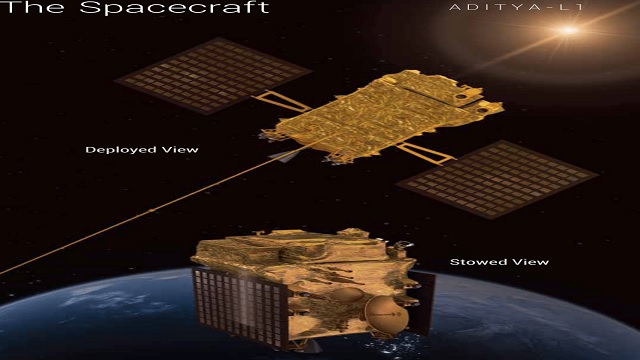Sun mission ISRO: Aditya L1 to be launched on September 2 at 11:50am
The PSLV-C57 or Aditya-L1 Mission or Sun Mission ISRO is all set to be launched on September 2, 2023 at 11:50 am.
Sriharikota: The PSLV-C57 or Aditya-L1 Mission or Sun Mission ISRO is all set to be launched on September 2 (Saturday), 2023 at 11:50 am.
According to reliable reports, the launch of Aditya-L1, the first space-based Indian observatory to study the Sun, is scheduled for September 2, 2023, at 11:50 Hrs. IST from Sriharikota, Indian Space Research Organisation (ISRO) informed.
ISRO to launch Aditya-L1, the first space-based Indian observatory to study the Sun, on September 2, 2023, at 11:50 Hrs IST from Sriharikota.
ISRO Chairman S Somanath announced the launch of the Aditya-L1 solar mission in the first week of September, following the success of the Chandrayaan-3 mission. This mission marks ISRO’s first dedicated effort to study the Sun, potentially revolutionising the understanding of the Sun’s behaviour and space weather.
The Aditya-L1 mission, named after the Sun’s core, aims to provide groundbreaking insights into the Sun’s dynamics. It will be placed in a special orbit around the Sun-Earth system called Lagrange point 1 (L1), situated about 1.5 million kilometers from Earth.
This strategic location allows Aditya-L1 to continuously observe the Sun without interruptions from eclipses or occultation. Scientists can now study solar activities and their impact on space weather in real-time.
The spacecraft is equipped with seven advanced instruments designed to examine different layers of the Sun, from the photosphere and chromosphere to the outermost layer known as the corona.
These instruments use various detectors to gather data crucial for understanding phenomena such as coronal heating, coronal mass ejections, solar flares, and more.
One of the most exciting aspects of the Aditya-L1 mission is its unique viewpoint at L1, enabling four instruments to provide clear observations of the Sun. Meanwhile, the other three instruments will conduct in-situ studies of particles and fields at this Lagrange point.
These combined observations hold the promise of unlocking the mysteries behind solar dynamics and their effects on the space between planets.
Scientists have high expectations for Aditya-L1’s payload, as it’s expected to shed light on the physics of the solar corona, its heating mechanism, magnetic field patterns, and the development of coronal mass ejections.
The data gathered by the spacecraft will help identify the sequence of processes leading to solar eruptive events and contribute to a deeper understanding of space weather’s causes.




 Ms Kalinga
Ms Kalinga